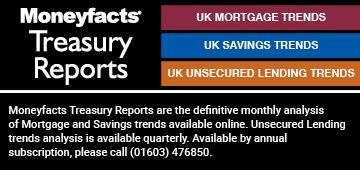Rachel Springall, Finance Expert at Moneyfacts, said:
“Savings rates fell across both variable and fixed sectors in August, which is the first time all rates dropped since the start of 2024. The downward path was perhaps an inevitable direction after the Bank of England base rate was cut, but it can take a few weeks for providers to make a move in response. One area of the savings market to take a hit has been easy access accounts, seeing the biggest month-on-month drop since April 2024. Those savers who have not reviewed their savings accounts would be wise to do so, to ensure they are still paying a competitive return.
“The savings market was also unsettled by a contraction in product choice month-on-month, but there remains a healthy variety of choice. Savers may have been concerned about deals disappearing from the market, in particular for fixed rate bonds which guarantee interest. However, the average shelf-life of a fixed rate bond has not dropped, with many providers opting to keep their products on sale, but to re-adjust the rates they are prepared to pay. As a result, the average shelf-life of a fixed rate bond rose to its highest point since May 2022 (53 days), to 51 days, up from 40 a month prior. However, those looking to lock in for longer will find the average longer-term fixed bond rate dipped below 4% for the first time since April 2023.
“Cash ISAs caught up with the rate-cutting trend during August and noted the biggest month-on-month fall to the average easy access ISA rate and notice ISA rate in over four years. Fixed ISAs also dropped by notable margins month-on-month, the average one-year ISA and longer-term fixed ISA rates fell by the biggest margin since February 2024. Cash ISAs are still worth considering to protect a deposit from income tax. These would be even more sought after if higher rate taxpayers are breaching their Personal Savings Allowance (PSA), due to the higher interest rates available on the market in recent years. Whichever account savers choose, it is imperative that they explore the more unfamiliar brands, as challenger banks currently pay some of the best rates on the market. However, these deals can change quickly, as providers need to react swiftly to any market movements to compete with their peers.”
Rachel Springall, Finance Expert at Moneyfacts, said:
“Savings rates fell across both variable and fixed sectors in August, which is the first time all rates dropped since the start of 2024. The downward path was perhaps an inevitable direction after the Bank of England base rate was cut, but it can take a few weeks for providers to make a move in response. One area of the savings market to take a hit has been easy access accounts, seeing the biggest month-on-month drop since April 2024. Those savers who have not reviewed their savings accounts would be wise to do so, to ensure they are still paying a competitive return.
“The savings market was also unsettled by a contraction in product choice month-on-month, but there remains a healthy variety of choice. Savers may have been concerned about deals disappearing from the market, in particular for fixed rate bonds which guarantee interest. However, the average shelf-life of a fixed rate bond has not dropped, with many providers opting to keep their products on sale, but to re-adjust the rates they are prepared to pay. As a result, the average shelf-life of a fixed rate bond rose to its highest point since May 2022 (53 days), to 51 days, up from 40 a month prior. However, those looking to lock in for longer will find the average longer-term fixed bond rate dipped below 4% for the first time since April 2023.
“Cash ISAs caught up with the rate-cutting trend during August and noted the biggest month-on-month fall to the average easy access ISA rate and notice ISA rate in over four years. Fixed ISAs also dropped by notable margins month-on-month, the average one-year ISA and longer-term fixed ISA rates fell by the biggest margin since February 2024. Cash ISAs are still worth considering to protect a deposit from income tax. These would be even more sought after if higher rate taxpayers are breaching their Personal Savings Allowance (PSA), due to the higher interest rates available on the market in recent years. Whichever account savers choose, it is imperative that they explore the more unfamiliar brands, as challenger banks currently pay some of the best rates on the market. However, these deals can change quickly, as providers need to react swiftly to any market movements to compete with their peers.”











